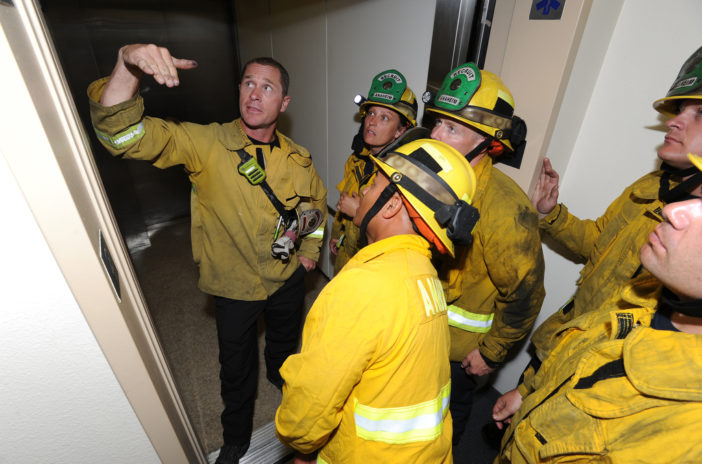Being trapped in an elevator is a nightmare scenario for many, but those in Anaheim can rest assured that Anaheim Fire & Rescue is prepared.
The department is training firefighters on rescuing people from a stuck elevator with little or no damage to the machine. Anaheim Fire & Rescue receives about 120 calls per year for elevator rescues. Station 3, in the resort district, handles the majority of those calls.
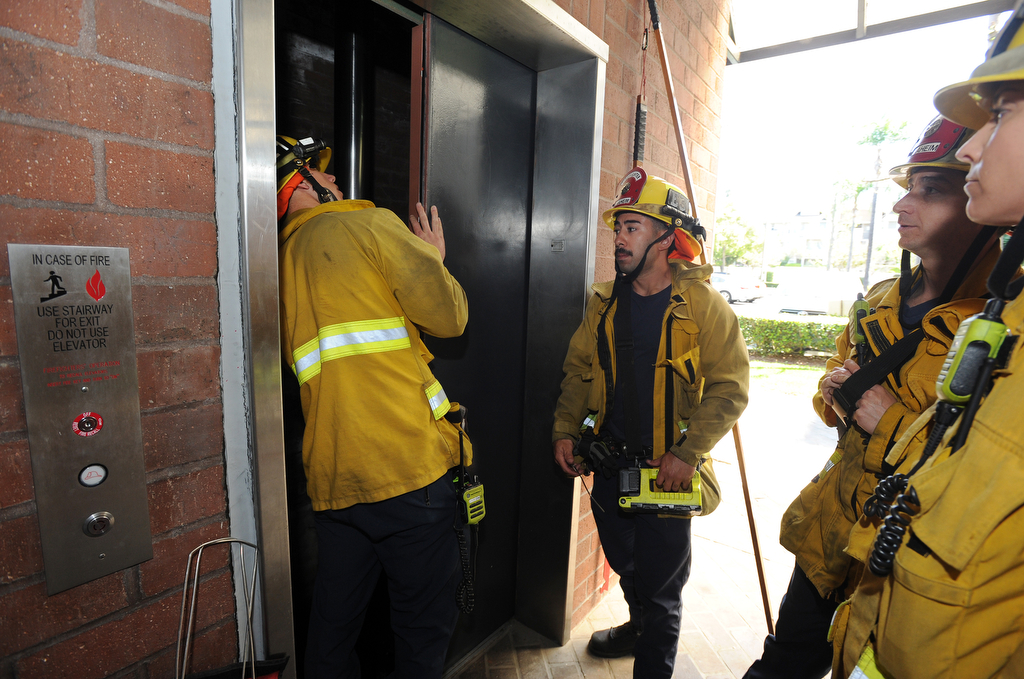
Anaheim Fire & Rescue trains recruits on elevator rescue protocols so they will be prepared the next time they receive a call to help someone trapped in an elevator.
Photo by Carlos Delgado/Behind the Badge
In an effort to better handle these incidents, Anaheim Fire & Rescue’s training company and Truck 1, 18 Anaheim fire academy recruits, and Truck 62 from Newport Beach Fire Department recently practiced their elevator rescue skills in a parking structure near Anaheim City Hall and in the elevators at Anaheim Memorial Manor.
If no one is in physical danger, those in the elevator can wait for mechanics to arrive and release them. In rare situations when there is a medical emergency, those inside need to be rescued soonerPreviously, firefighters used hydraulic rescue tools to cut into elevators during rescues, which damaged the machines.
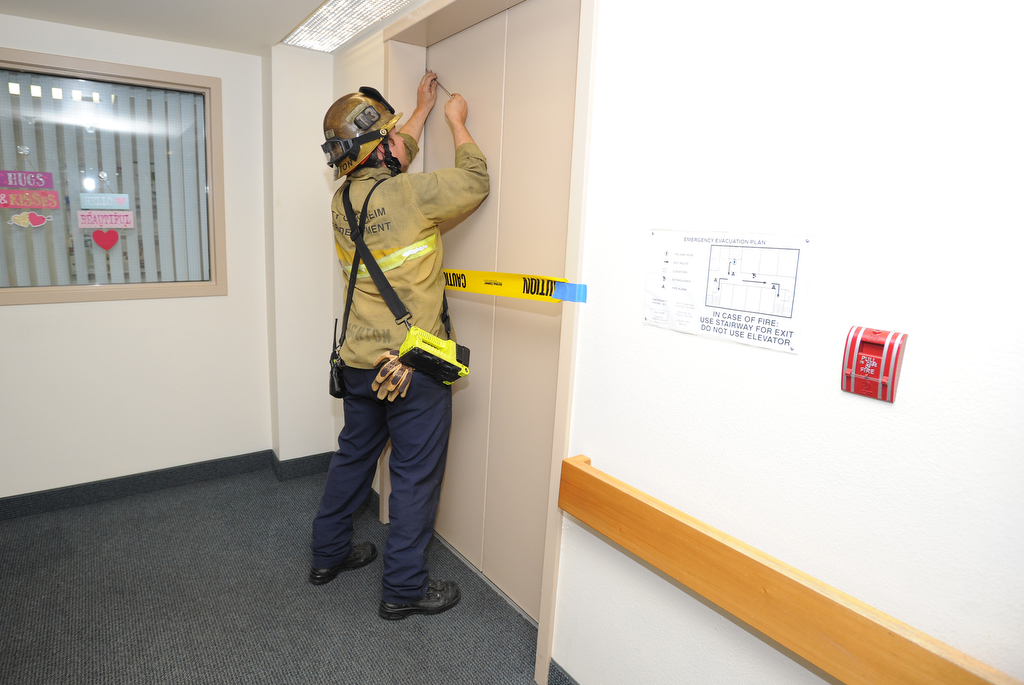
An Anaheim firefighter tapes off an elevator for safety during a training at a local building that allowed the department to practice opening their elevator doors to simulate a rescue.
Photo by Carlos Delgado/Behind the Badge
“We needed to find a way that we can work together with the elevator industry to resolve these issues without causing a ton of damage and while still keeping people safe, which was really our primary focus,” Anaheim Fire & Rescue Firefighter Mike Houghton said.
Houghton attended an elevator entrapment training in 2013 and began spreading that knowledge throughout Anaheim Fire & Rescue. The department often invites nearby fire agencies, such as Newport Beach Fire Department, to join their training because opportunities to practice on a working elevator are scarce.
“It’s not a scenario where we can build a training prop down at North Net that’s going to really mimic what they’re going to see in the field,” Houghton said. “We need to come out into real buildings.”
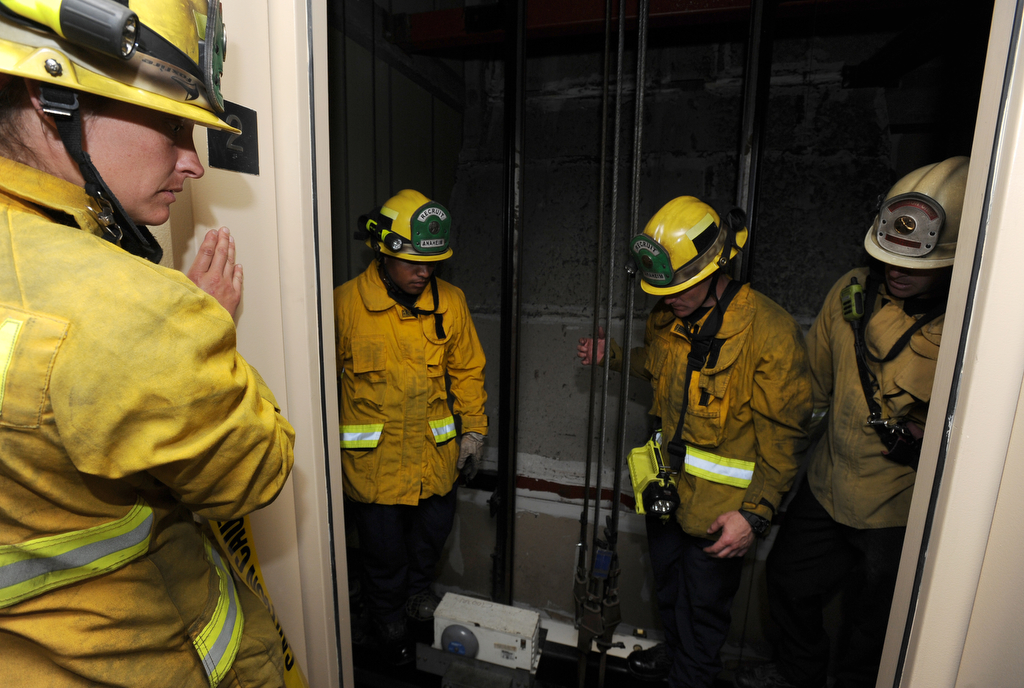
Anaheim Fire & Rescue recruits practice opening an elevator to simulate a rescue situation.
Photo by Carlos Delgado/Behind the Badge
Elevator rescues are tricky. Not all elevators are built the same, and with different locking mechanisms it can be tough to get the doors open. The fire department’s ladder trucks store the needed tools to respond to elevator rescues.
“This is technically more of a rescue type of operation and that’s what the ladder trucks do,” said Anaheim Fire & Rescue Captain Brent Faulkner. “We’re a huge rolling toolbox, basically.”
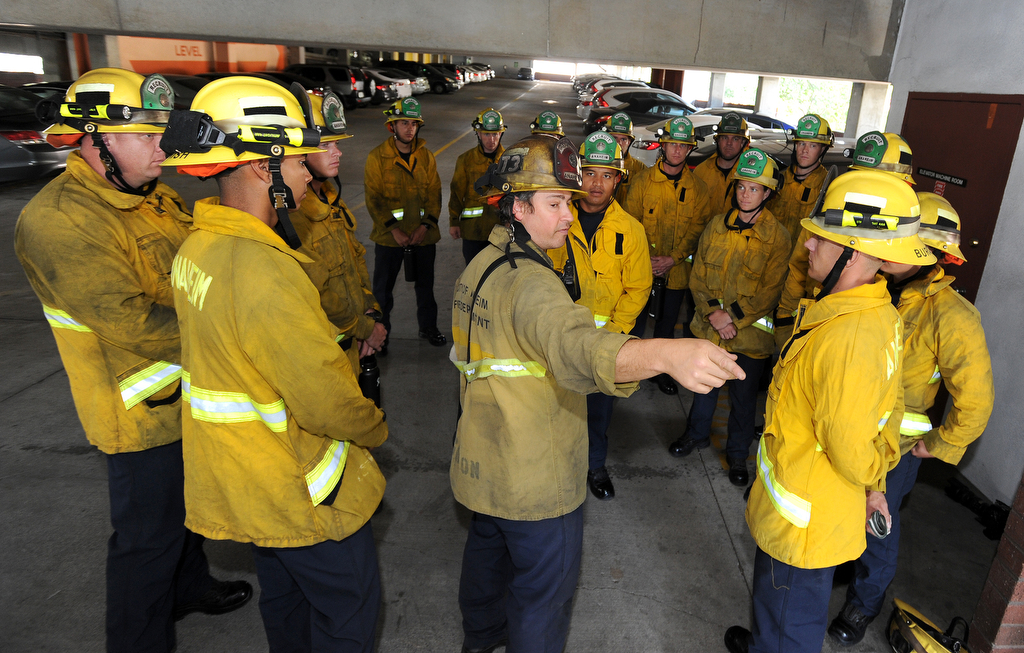
Anaheim Fire & Rescue often invites other agencies to join them for elevator rescue training on working elevators.
Photo by Carlos Delgado/Behind the Badge
The first step is resetting the power. Sometimes that fixes the problem, firefighters said. If that doesn’t work, the next step is gaining a better view by looking down the elevator shaft from above or from an adjacent elevator, Anaheim Fire & Rescue Battalion Chief Tim Sandifer explained.
“It’s important for us to practice on these (both hydraulic and traction electric elevators) different rescue techniques and different ways to gain access into the elevators,” said Anaheim Fire & Rescue Captain Brad Oye.
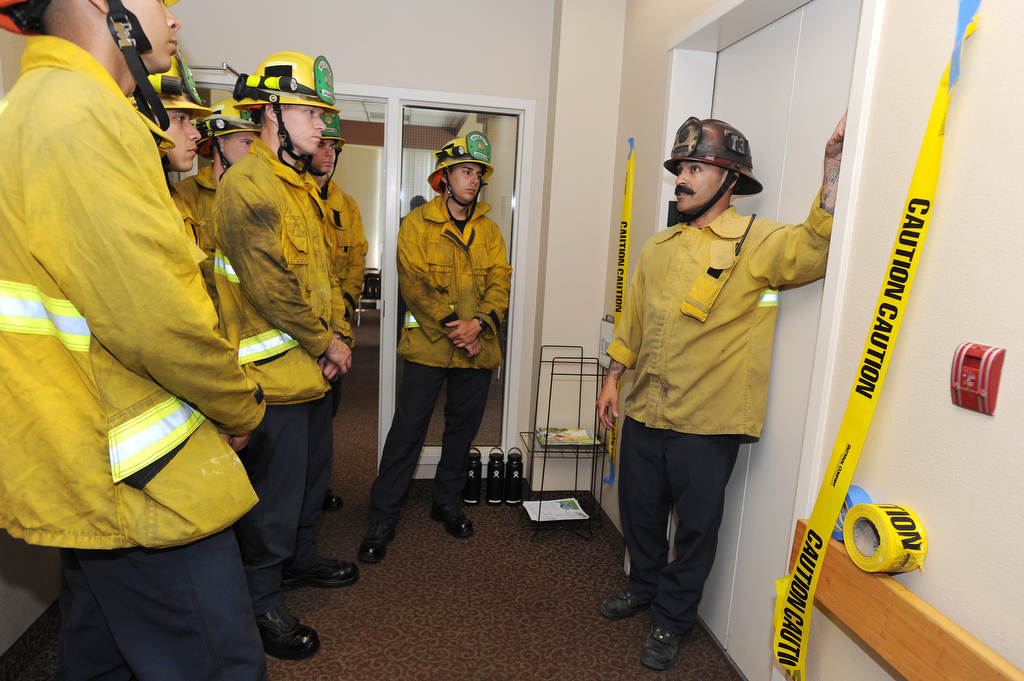
Anaheim firefighters and recruits learn about the mechanics of elevators during a recent training.
Photo by Carlos Delgado/Behind the Badge
Next, they guide tools into place to unlock the doors, similar to using a wire hangar to unlock a car door.
If a person were trapped inside, the firefighters have several options. They can pull the person through an escape hatch in the ceiling or open the doors to the building so the person can get out, if the elevator is positioned right. If the elevator is hydraulic, firefighters can slowly lower the car into a position that makes it easier for people to walk out.
“We can manipulate (the locks) in a certain way around the door to unlock the interlock without causing any damage, which is really the key component to all this,” Houghton said. “It’s faster than forcible entry, it maintains the integrity of the building, it doesn’t damage any of the building owner’s property, and it gets the people out of their trapped situation very quickly.”
 Behind the Badge
Behind the Badge
